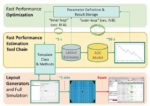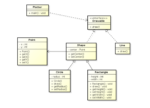Many types of designs, including analog designs, MEMs, and image sensors, require electrically matched configurations. This symmetry has a huge impact on the robustness of the design across process variations, and its performance. Having an electrically matched layout basically means having a symmetric layout. To check … Read More
Electronic Design Automation
Verifying 10+ Billion-Gate Designs Requires Distinct, Scalable Hardware Emulation Architecture
In a two-part series, Lauro Rizzatti examines why three kinds of hardware-assisted verification engines are a must have for today’s semiconductor designs. To do so, he interviewed Siemens EDA’s Vijay Chobisa and Juergen Jaeger to learn more about the Veloce hardware-assisted verification systems.
What follows is part one,… Read More
Getting Ahead with Semiconductor Manufacturing Equipment and Related Plasma Reactors
Advanced semiconductor fabrication technology is what makes it possible to pack more and more transistors into a sq.mm of a wafer. The rapidly increasing demand for advanced-process-based chips has created huge market opportunities for semiconductor manufacturing equipment vendors. According to SEMI, worldwide sales … Read More
Automating and Optimizing an ADC with Layout Generators
I first got involved with layout generators back in 1982 while at Intel, and about 10% of a GPU was automatically generated using some code that I wrote. It was an easy task for one engineer to complete, because the circuits were digital, and no optimization was required. In an IEEE paper from the 2022 18th International Conference… Read More
Hazard Detection Using Petri Nets. Innovation in Verification
Modeling and verifying asynchronous systems is a constant challenge. Petri net models may provide an answer. Paul Cunningham (GM, Verification at Cadence), Raúl Camposano (Silicon Catalyst, entrepreneur, former Synopsys CTO and now Silvaco CTO) and I continue our series on research ideas. As always, feedback welcome.
The
… Read MoreEDA Product Mix Changes as Hardware-Assisted Verification Gains Momentum
The Design Automation Conference, as always, is a good barometer on the state of EDA and my area of interest, verification. The recent DAC offered plenty of opportunities to check on trends and the status quo.
Remarkably, exhibitors and attendees were upbeat about the chip design landscape despite concerns about supply chain … Read More
WEBINAR: A Revolution in Prototyping and Emulation
This webinar will introduce to you a revolutionary new way to do prototyping and emulation at best-in-class performance, productivity, and pricing by unifying the hardware and a new software stack so one system is capable of prototyping and delivering essential emulation functionality.
Register Here
The speed of Moore’s law… Read More
An EDA AI Master Class by Synopsys CEO Aart de Geus
I consider Dr. Aart de Geus one of the founding fathers of EDA and one of the most interesting people in the semiconductor industry. So it is not a surprise that Aart was chosen to attend the CHIPs Act signing at the White House.
Here is his current corporate bio:
Since co-founding Synopsys in 1986, Dr. Aart de Geus has expanded Synopsys… Read More
UVM Polymorphism is Your Friend
Rich Edelman of Siemens EDA recently released a paper on this topic. I’ve known Rich since our days together back in National Semi. And I’ve always been impressed by his ability to make a complex topic more understandable to us lesser mortals. He tackles a tough one in this paper – a complex concept (polymorphism) in a complex domain… Read More
Delivering 3D IC Innovations Faster
3D IC technology development started many years ago well before the slowing down of Moore’s law benefits became a topic of discussion. The technology was originally leveraged for stacking functional blocks with high-bandwidth buses between them. Memory manufacturers and other IDMs were the ones to typically leverage this … Read More












Quantum Computing Technologies and Challenges